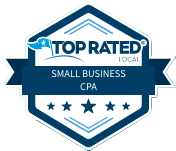Food & Beverage Business Tax Planning Services
F&B businesses hustle to earn every margin point — taxes shouldn’t quietly erode it. Proactive tax planning helps preserve margins, smooth cash flow, and guide decisions toward long‑term goals.
Straight Talk CPAs partners with restaurant groups, bars, food manufacturers, and distributors year‑round to anticipate exposure, coordinate across entities and locations, and turn taxes into a lever for expansion.
Why It Matters
Taxes compound across payroll, tips, inventory, sales/use tax, equipment, leases, and multi‑state operations. Proactive
tax planning reduces surprises, manages credits and thresholds, and protects working capital.
What Food & Beverage‑Focused Tax Planning Includes
Choosing the Right Entity Structure
The way a business is structured shapes its tax bill and how profits reach owners. Regular selection and review align liability protection, state footprint, and cash needs—while preventing costly rework later.
Timing Revenue, COGS, and Capital Outlays
Smart timing smooths seasonal swings. Plan recognition of revenue and COGS, and schedule repairs vs. improvements and equipment purchases to optimize deductions and preserve liquidity.
Maximizing Industry Credits & Deductions
Many incentives get missed in the rush. Identify and capture items like tip credit, WOTC, energy‑efficient upgrades, R&D for new recipes/processes, and accelerated depreciation on kitchen and plant equipment.
Sales and Use Tax Compliance
No more multi‑jurisdiction guesswork. Establish rules for prepared vs. non‑prepared food, delivery fees, alcohol, and marketplace facilitators; reconcile POS to filings and remediate nexus exposure.
Payroll, Tips, and Benefits Strategies
Better systems lower risk and tax drag. Calibrate tip reporting and allocations, evaluate safe harbors, and leverage tax‑advantaged benefits while maintaining compliance and team retention.
Preparing for Major Changes
Big moves change the tax picture. Before opening a new location, launching delivery, signing a co‑packing deal, buying equipment, or selling equity, model the impact so there are no surprises later.
A Real Example
A multi‑unit restaurant group faced cash crunches each quarter. By aligning POS data to sales tax filings, claiming the tip credit, timing kitchen upgrades under accelerated rules, and tightening estimates, penalties were avoided, and after‑tax cash flow improved ahead of a new location launch.

